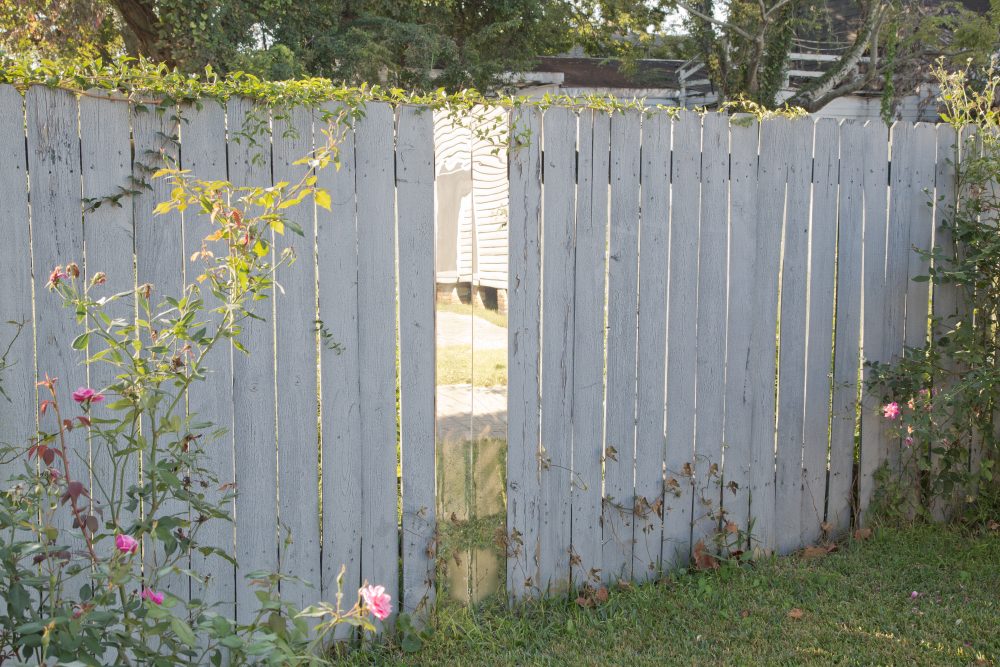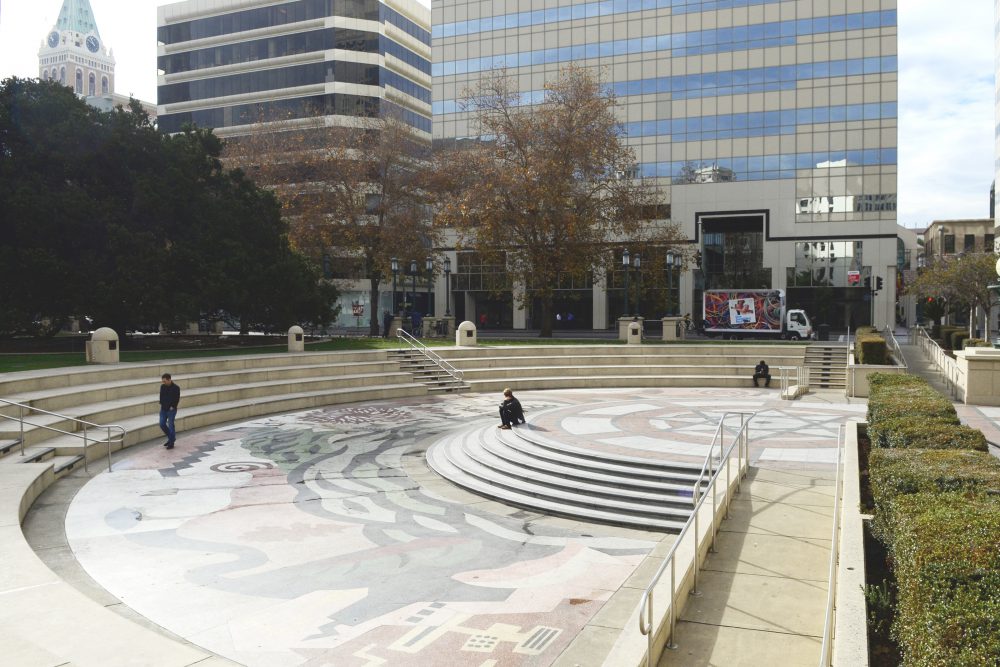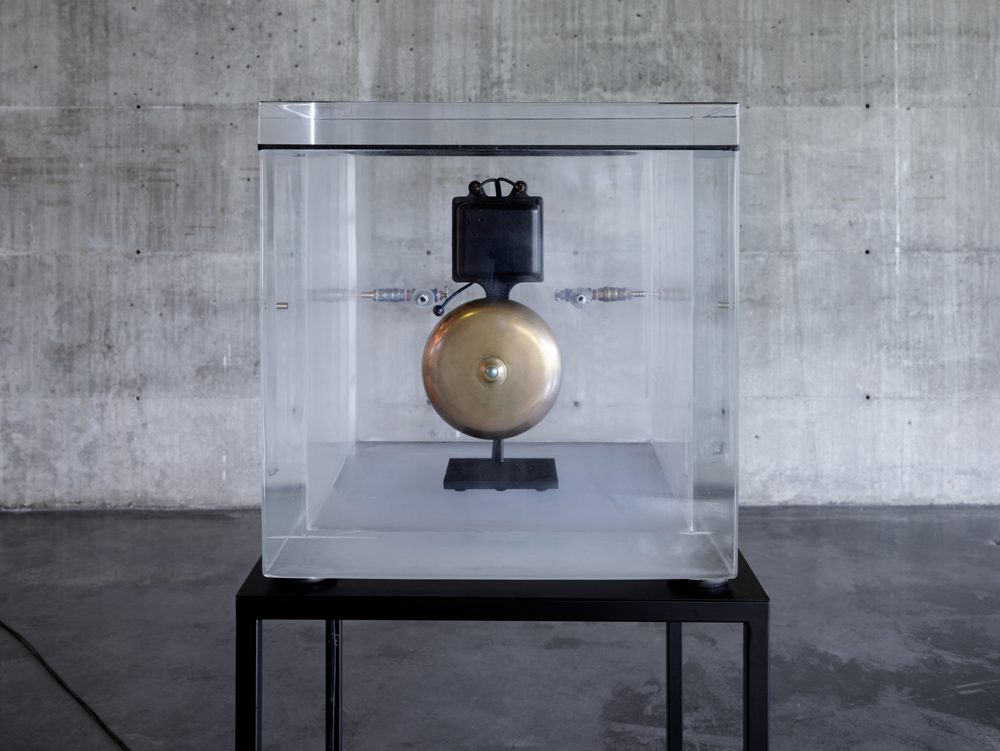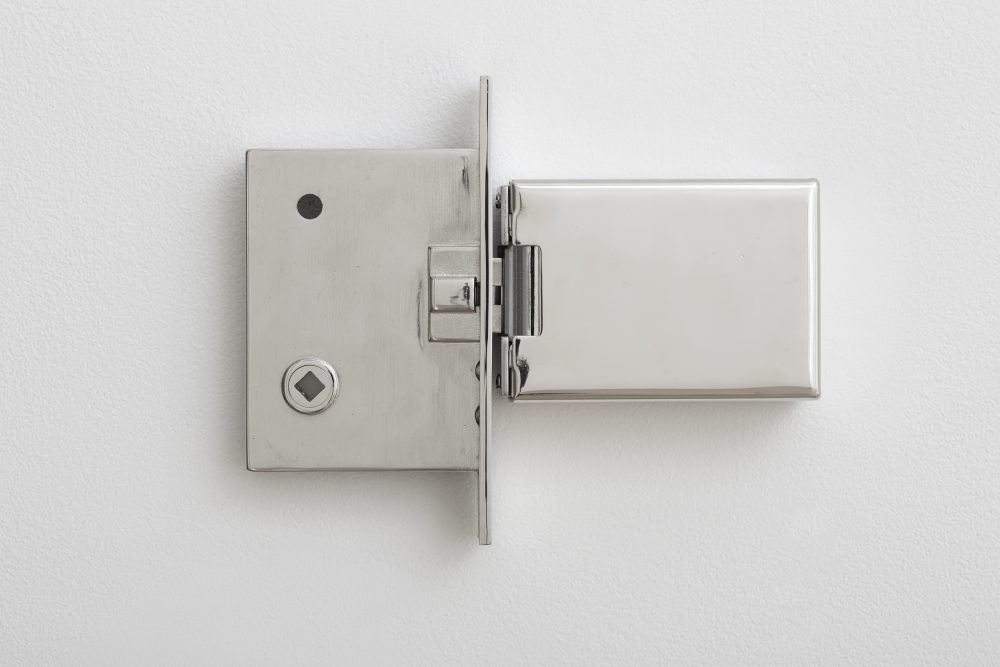Altering the Everyday: An Interview with Zarouhie Abdalian
Charlie Tatum speaks with New Orleans-based artist Zarouhie Abdalian, whose work is included in this year’s Whitney Biennial, about the process of adapting site-specific artworks to new locations.

Installation view of Zarouhie Abdalian’s Chanson du ricochet, 2014, at the New Orleans African American Museum of Art, Culture and History as part of “Prospect.3: Notes for Now.” Sound and mirrored surfaces. Courtesy the artist; Prospect New Orleans; and Altman Siegel, San Francisco.
Charlie Tatum: I want to talk a little bit about the work you made for “Prospect.3: Notes for Now”—Chanson du Ricochet, 2014. You created it thinking about the history of the New Orleans African American Museum and the Tremé neighborhood, specifically through the tools that you list in the audio component. Since then, you have reinstalled it in a few different locations, at MASS MoCA and now, as part of the Whitney Biennial. What is the process like adapting that sort of site-specific installation to other environments?
Zarouhie Abdalian: Well, when it started in New Orleans, some of the tools that I was listing were specific to the materials and construction of the site, but the list was also really broad and extensive. It included tools that would have been used for types of labor on which the site historically depended and currently depends—labor that was historically forced or coerced or overlooked in some way—and tasks that were related to the everyday, like keeping the grounds clean and those types of things. Usually with site-specific pieces, I don’t redo them in other locations, but with this one it made sense, especially when thinking about the connectedness of the various types of work being performed at these sites.
I wasn’t necessarily going to install this piece when I went to MASS MoCA for my first site visit, but the old factory buildings struck me as in some ways similar to the site in New Orleans: The materials of the site clearly designated its histories. And there were also tools and materials out, and people were working on the site. MASS MoCA occupies a 19th-century mill—used originally for textile manufacturing and later for manufacturing electronic components—and this history of production is evident in the 26 buildings of the museum’s campus. There, and later for the Whitney as well, I extended the list from what I had compiled in New Orleans in order to include more tools specific to the sites of each of the subsequent instances of the piece. At the Whitney, the work shifts from focusing on the immediate building where one finds oneself and instead orients the viewer to the panorama of the Meatpacking District and the city beyond it. The title refers to an old French expression that [French Renaissance writer François] Rabelais uses; the “chanson du ricochet” is a story, parts of which may contradict or overthrow one another, that does not and cannot end. So it makes sense to me that the piece continues in this way.
CT: At the Whitney, it’s outside on the stairs, correct?
ZA: Yeah, it is different from how it was in New Orleans and at Mass MoCA, where the sound was actually coming from the buildings and the materials of the site. At the Whitney, that approach didn’t make sense given the building’s newness and its particular architecture. So the scale sort of shifts for the work. Even though the sound is at the side of the Whitney at the staircase, you’re looking out over this huge cityscape. You can see really far. You have a high vantage from the sixth floor, but it’s not so high that you don’t still feel part of the city.
CT: At the African American Museum, you replaced pieces of siding on the structures there with mirrored glass. Those additions had an additional resonance since the museum itself had been closed to the public for over a year, and the closure had allowed the weather to leave the buildings in quite poor condition. Are there new physical components in the later iterations of the work?
ZA: No, that kind of fell away at MASS MoCA and at the Whitney. I think it was important at the African American Museum as a way to draw people through the space and also to reflect the situation of the space, but in these other locations, in part because there are other artworks and so much else going on, it didn’t seem to make as much sense.

Installation view of Zarouhie Abdalian’s Occasional Music, 2013, in Oakland, California. Brass bells and electronics. Courtesy the artist and Altman Siegel, San Francisco.
CT: At a recent talk at Tulane University, you discussed several of your outdoor installations, including Occasional Music, 2013, which consisted of intermittently ringing bells installed on various buildings around Oscar Grant Plaza in downtown Oakland, California. How does your practice change when you’re working outdoors and in public space versus a gallery or museum setting?
ZA: Galleries and museums are public settings wherein artistic materials and actions are interpreted first and foremost in relationship to the history of art. Beyond just working outdoors instead of in, the biggest change is the shift in the audience’s expectations and frame of reference. Whatever I do for the piece is not necessarily viewed or approached exclusively under the heading of “Art.” For instance, in the case of Occasional Music, there are bells ringing—some may interpret the signal of the bells as part of an artwork, but it’s not that to everyone. Most people using Oscar Grant Plaza are there for purposes other than art appreciation. In effect, these bells prompted varied associations and responses from a range of auditors. These responses were simply structured by the physical and historical environment of the city center.
CT: You use a lot of different materials, whether sound or pieces of metal or found objects. When you begin making a work, do you usually start from the materials or start from ideas?
ZA: I usually start with ideas...well actually, it depends on the piece. With the pieces created for specific sites, I start with the materials already present there, thinking about them and observing the ways people interact with or move within them—and the ways that people interact with each other at the site. That’s the starting point for the installations. And again, the physical materials of the space can inform the types of things I want to add. For example, in Away Setting, 2012, I programmed a series of simple bulbs from the hardware store to light an abandoned cafe; seeing rooms activated by lights isn’t totally out of the ordinary, but in the context it is peculiar enough to make strange an otherwise familiar situation.
But for the works in galleries, those start with ideas and thinking through some sort of conceptual framework. I’m generally starting with some sort of broad, vague notion of something I want to think through. The ideas become more specific through a research process that includes working through things on paper and through materials.

Installation view of Zarouhie Abdalian’s As a demonstration, 2013, at the Berkeley Art Museum and Pacific Film Archive. Acrylic vacuum chamber, electric bell, and steel. Courtesy the artist; the Berkeley Art Museum and Pacific Film Archive; and Altman Siegel, San Francisco.
CT: Something that connects your objects with the outdoor, more immersive installations is that both frequently bring attention to something that might be overlooked on a day-to-day basis. You’re often slightly tweaking something to make the viewer look at either the object or the space differently. Could you speak a little bit more about that and how you think those adjustments resonate with the viewer?
ZA: Using materials that are familiar and parts of spaces that are generic—like walls, simple things—that’s been important to me because I don’t want the pieces to be so outside of the everyday that they feel foreign or distant. In my sculptures I am similarly focused on the minimal difference necessary for an otherwise readymade object to become an art piece. I make sure the work isn’t so divorced from quotidian materials and experiences, so that the work can be easily related to other situations and environments and can resonate with the viewer in the spaces and environments that constitute their everyday.
CT: A lot of your practice looks at either creating new systems or disrupting systems that already exist in the world. In the talk at Tulane, you mentioned Openings, 2016, which was on view last year at Clifton Benevento in New York. The work is a lock that unlocks and relocks itself on a timer. Walking in and out of a front door is such an everyday occurrence, but you’ve isolated this one aspect of the system and let it work on its own.
You also mentioned two works you showed at the Berkeley Art Museum [As a demonstration, 2013, and Each envelope as before, 2013]: In one, there is a bell inside of a soundproof, clear vitrine and the other is a display case that’s completely opaque and actually emits sound. Do you think about systems in your work?
ZA: That’s a really good question! I haven’t talked about this with a lot of people, or even completely thought it through myself. My practice has sought to highlight the systems already in play and respond to the way things are organized and ordered in the world. I am specifically interested in the processes by which something might be nominated as a work of art as well as the the authorities invoked in art’s name. What authorities are relied upon for that designation to be effected? And, of course, other systems of power filter in as well.
CT: Thinking about why an object is art—or why something is not—can really inflect the way you think about the space outside of a gallery, too.
ZA: Or why a space, even an outdoor one, is being used in a particular way. What interests are being represented by the arrangement of buildings in space?

Zarouhie Abdalian, Openings, 2016. Mortise lock, electric strike, steel, and electronics. Courtesy the artist and Altman Siegel, San Francisco.
CT: You’re opening a show at LAXART in Los Angeles in July. Could you share a little bit about your thoughts for that?
ZA: The project is starting from an investigation of prehistoric knapped tools. I’m thinking through the stone tools as objects that have been minimally altered—naturally occurring forms that have been transformed into something else. The creation of these tools marks a transition in our own human history, from a state wherein nature is given or free for appropriation into a state that posits nature as the subject of human exploitation. This has been characterized as alienation of labor. My project is not necessarily about the stones themselves but what they signal and the ways these tools are studied, which is through various methods of trying to understand and see the minimal difference that makes a stone a tool, used to cut an animal or something. To the naked eye, the tool and the stone look similar. It relates to how I think about and work with my own sculptures, which are basically readymades that have been minimally altered to mean something more than before.
Editor's Note
The 2017 Whitney Biennial is on view through June 11, 2017, at the Whitney Museum of American Art (99 Gansevoort Street) in New York.



